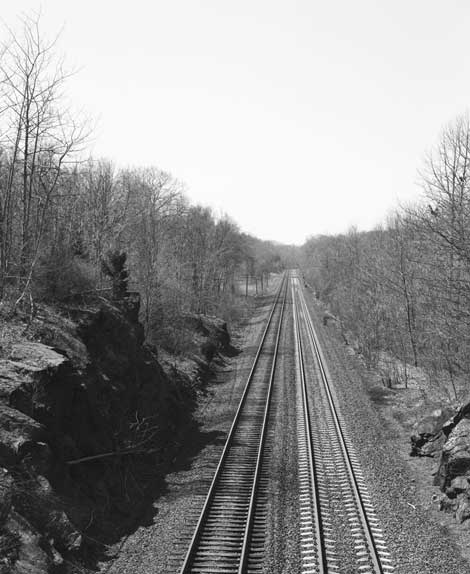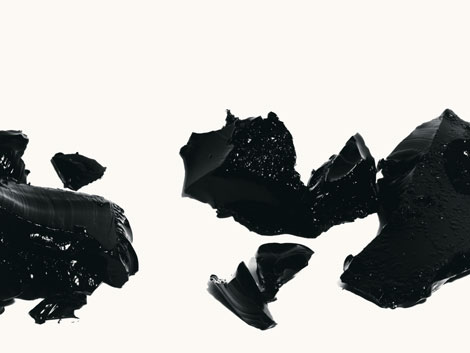James Welling’s “Flowers” (2004–11) suggest backlit tree branches in bloom against a blank sky. A pure white light appears to pass through these elegant arrangements of shadowy stem, leaf and petal shapes, and in the process is refracted, as if by a prism, into otherworldly hues. These are photograms, camera-less images made by placing objects onto photosensitized material then exposing to light. In subject matter and technique they invoke some of the earliest photographs ever made: 19th-century botanical studies by William Henry Fox Talbot and Anna Atkins. Yet they have a 21st-century sensibility, if not a timeless one.
I first became aware of Welling and in particular, his “Flowers” series, not long after moving to Los Angeles. Perhaps for that reason, I came to associate his photography with Southern California—with its abundant sunlight and also the pioneering aesthetic of artists like John Baldessari, Robert Heinecken and James Turrell. So it came as a surprise to walk recently through “Monograph,” Welling’s mid-career retrospective at the Hammer Museum now, and realize that my impressions were a bit off. Although he lives in LA (and teaches at UCLA), many of his inspirations also draw from East Coast, New England roots, an interest in painting and a commitment to traditional, as well as experimental, modes of photography.

James Welling. 021R, 2011. Chromogenic print. 46 x 37 in. (116.8 x 94 cm). Courtesy the artist and David Zwirner, New York/London.
The chronological exhibition begins with black-and-white (not unexpected for a mid-career photographer’s work). Beyond that, significant groups of gelatin-silver images hang amongst color ones in every gallery. Black-and-white, film-based photography is now retro enough that to practice it is to accept a certain sentimental outlook (whether traditional or personal) or to announce: “I’m doing this to make a conceptual statement.” Welling seems to do both. Perhaps the same could be said for using a large-format camera and making straightforward documentary photographs of recognizable subjects, which is also part of Welling’s practice.
In the first gallery are black-and-white portraits of the photographer’s friends from his CalArts graduate-school days, and Bauhaus-style night shots of LA’s vernacular architecture. Another series focuses on the crisp, handwritten script in a 1840s family diary. In nearby galleries, large gelatin-silver prints of railroads and old stone buildings in Connecticut, where Welling is from, are interspersed with color and black-and-white abstractions, all made concurrently in recent decades. This jarring juxtaposition of realism to abstraction, monochrome to rainbow hues, was the first inkling I got that Welling is a cultural chameleon—an artist who can’t easily be pinned down and codified.
The experimental works are the strongest: for their visual and conceptual power, for their art-historical references and the brilliantly simple optical concepts they employ. As an example, “Degradés” (1986-2006) is as exquisite yet elemental as can be. Created in the darkroom by exposing photographic paper to color-filtered light—a single hue, or two, one above the other—they clearly evoke Rothko color field paintings. Another early series, “Brown Polaroids” (1988), consists of four prints of brown velvet drapery, which Welling has said were inspired by imagining the 19th Century abstractly (think Victorian fabrics plus Industrial Revolution).
Other series playfully investigate photographic properties in black and white—of surprising materials such as crumpled foil, phyllo dough flakes on drapery and black-ink-dyed gelatin—the latter resembling chunks of coal or internal organs, depending upon arrangement and lighting. “New Abstractions” (1998-2000) plays with the element of chance: Welling took strips of Bristol board and let them fall randomly on photographic paper in the darkroom before exposing to light. The result: striking images that (especially when enlarged) recall Abstract Expressionist paintings.

James Welling. West, Guilford, CT, 1989. Selenium toned gelatin silver print. 6 ¾ x 5 in. (17.1 x 12.7 cm). Collection of the artist.
Welling’s “straight” photographs are beautiful, too, but although they demonstrate his personal inspirations, they don’t pack the same conceptual punch. More recent works of the last few years involve digital technology and, interestingly, merge the straight and the experimental. The most striking of these is the series “Glass House” (2006–09), photographs of a modernist architectural gem by Philip Johnson, that Welling made by holding color filters in front of the camera lens (on a digital camera). “Maison de Verre” (2009) is another series of architectural images in which select elements are colored using Adobe Photoshop. Some images seem a little gimmicky and others are truly visually arresting, but I’m not fully convinced they push conceptual boundaries to the degree that Welling has set us up to expect.
So why are his techniques and subjects so varied and seemingly random? Why does he jump back and forth between representation and abstraction, tradition and experimentation?
In 1980, around when Welling began considering photography as central to his art practice, literary theorist Roland Barthes seems to have anticipated, in his book Camera Lucida: Reflections on Photography, the philosophical and semantic quandary that artist-photographers face now, decades later. On the first page Barthes wrote: “I wasn’t sure that Photography existed, that it had a ‘genius’ of its own.” A few pages later, he explained: “I wanted to learn at all costs what photography was ‘in itself,’ by what essential feature it was to be distinguished from the community of images.”
Nowadays, of course, what Barthes foresaw is unavoidable. To practice photography as an artist, you have to consider the degree to which it still seems relevant, given the profound analog-to-digital paradigm shift that has, in turn, sparked an age of astonishing ubiquity of photographs.
One might say that Welling—who calls himself a “photographer” rather than an “artist”—considers photography in Barthes-esque perceptive and associative ways. But instead of using words he employs the visual medium itself to explore its structural and communicative properties. By working in so many modes and styles, he manages to mediate between photography’s many seeming polemic truths, at a time when one can’t help but wonder pessimistically whether it all still matters.
In an exhibition catalog entry, MoMA photography curator Eva Respini interviews Welling. They discuss whether the seemingly opposing approaches within his art might actually complement one another. Welling agrees: “I divide photography into lens-based pictures and photograms. The lens-based model is based on the Renaissance idea of the picture, whereas the photogram is a shadow of an object on a photographic surface. Neither is entirely abstract because both connect to a referent.”
Rosalind Krauss, in her 1989 essay “Photography and Abstraction,” explained the semiotic term “referent” in unvarnished words: “A photograph is always of something. … This is a condition it cannot escape.”
Barthes, the semiotician, of course went on at length in Camera Lucida about the function of a referent in photography: “By nature, the Photograph has something tautological about it: a pipe, here, is always and intractably a pipe. It is as if the Photograph always carries its referent with itself. … they are glued together, limb by limb, like the condemned man and the corpse …” Then he sums up: “In short, the referent adheres. And this singular adherence makes it very difficult to focus on Photography.”
The referent in Welling’s photographs can vary from a true scene before the camera to the symbolic object as subject to no visually apparent subject at all. But of course there is always a subject, and threading through every image is the referent of photography itself. The series “Light Sources” (1977-2005) is a prime example. It consists of black-and-white photographs of varied subjects curated together. Mostly they appear literal to the series title: they are light fixtures. But the inclusion of other subjects and in particular, portraits, begs the question: What constitutes a light source? And by extension of that pattern of thought—because photography itself is dependent upon light—what constitutes photography?
Welling’s art demands afterthought, given his elliptical, nuanced relationships to subjects and encyclopedic range of embedded references. What I’ve arrived at is a single question: Is it smart or even brave of Welling to recognize photography’s inherent dichotomies for what they are and resist trying to reconcile them?
In Camera Lucida, Barthes conceded: “Photography evades us.” And as Welling shows us, that’s what’s so fascinating about it.




